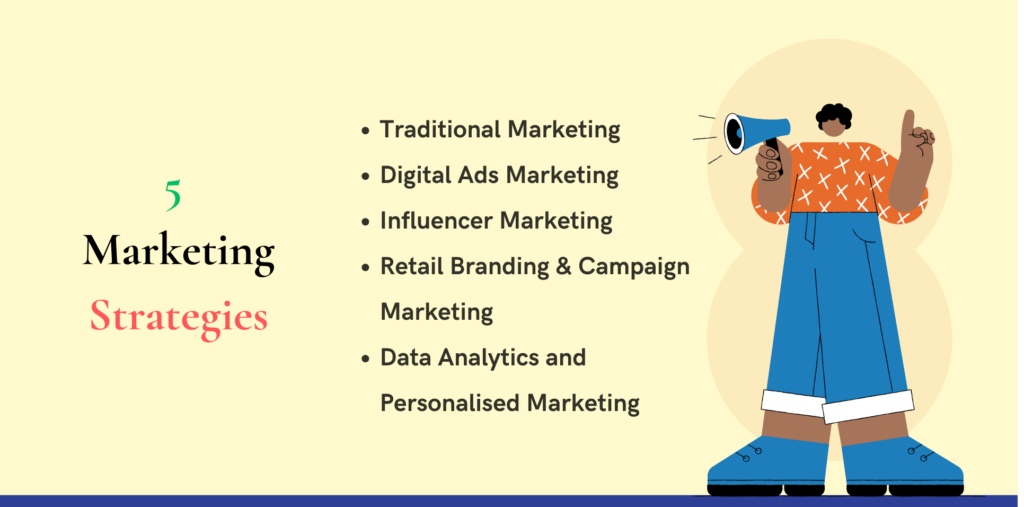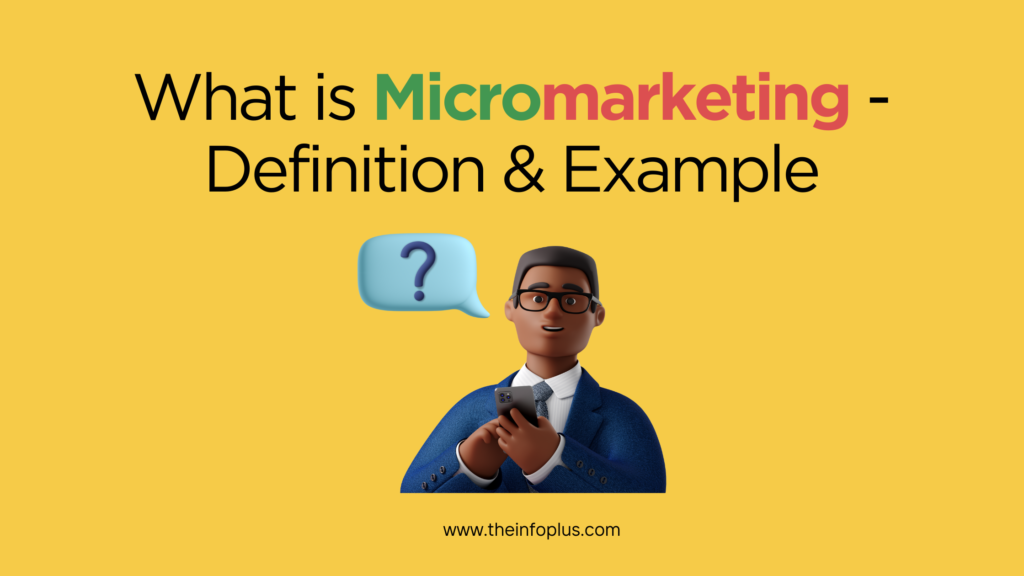Here Info Blogger has explained about “why retailers need to prepare about marketing strategies to spend their money to get more revenue.” You can check out more details regarding Importance of Retailer marketing strategies, top 5 marketing strategies that retailers need to use.
Read More : How Can the Business Incorporate the Marketing Concept ?
Importance of Retailer Marketing Strategy
According to Info Blogger ever-evolving landscape of modern commerce, retailers find themselves in a perpetual quest for highly efficient marketing strategies that not only draw customers but also drive substantial sales growth. In this fiercely competitive environment, retailers recognize the paramount importance of dedicating a substantial chunk of their annual budget to marketing endeavors as a means to gain a competitive edge.
Within the confines of this article, we will delve into the core of 5 marketing strategies that retailers spend their annual budget on. These 5 strategies serve as the lifeblood of their promotional efforts, enabling them to effectively showcase their products and services, elevate brand recognition, and ultimately usher in a surge of revenue.
5 Marketing Strategies that retailers spend half of their annual budget on

Strategy 1 : Traditional Marketing
Traditional marketing methods remain a cornerstone of value for retailers. This strategy encompasses advertising through television, radio, print media, billboards, and direct mail. While some contend that traditional marketing is waning in the face of digital dominance, it possesses enduring strength, particularly in its ability to target specific demographics and reach a broad audience. Retailers consistently earmark a significant portion of their budget for traditional marketing endeavors, underscoring their recognition of the vital role these methods play in engaging potential customers across diverse channels.
One of the foremost advantages of traditional marketing lies in its capacity to craft a palpable presence for retailers. Television commercials and radio advertisements, for instance, can cultivate brand recognition while nurturing consumer trust. Furthermore, print media and billboards effectively command the attention of prospective customers. Even in the age of digital expansion, it’s imperative to acknowledge that traditional marketing strategies continue to command a noteworthy allocation within retailers’ marketing budgets.
Top 5 Methods of Traditional Marketing
- Print Advertising
- Broadcast Advertising
- Outdoor Advertising
- Telemarketing
- Events and Trade Shows
Strategy 2 : Digital Ads Marketing
With the increasing popularity of the internet and social media, retailers have embraced digital advertising as a key marketing strategy. This strategy involves leveraging various online platforms, such as search engines, social media platforms, and websites, to promote products and services. Digital ads marketing allows retailers to target specific demographics and track the performance of their campaigns in real-time. As a result, retailers are able to allocate their budget more efficiently and achieve higher return on investment (ROI).
One of the most effective digital advertising methods is search engine marketing (SEM). By utilizing search engine optimization (SEO) techniques and paid search ads, retailers can ensure that their products and services appear prominently in search engine results pages. Social media advertising is also highly effective, as it allows retailers to reach a quality and existing audience and engage with potential customers directly. Digital ads marketing has become an essential component of retailers’ marketing strategies, as it provides a cost-effective way to reach and engage with their target audience.
Top Methods of Digital Ads Marketing
- Search Engine Advertising
- Social Media Advertising / Micromarketing
- Display Advertising
- Email Marketing
- Content Marketing
- Video Advertising
- Remarketing/Retargeting
Strategy 3 : Influencer Marketing
Nowadays, influencer marketing continuously increases and gains significant traction among retailers as an effective way to reach and engage with their target audience. This strategy involves collaborating with influential individuals who have a large following on social media platforms. By leveraging the popularity and influence of these individuals, retailers can promote their products and services to a wider audience and build brand credibility. Influencer marketing has become an integral part of retailers’ marketing strategies, as it allows them to tap into the trust and loyalty established by influencers with their followers.
When incorporating influencer marketing into their strategy, retailers should meticulously choose influencers whose values and target audience align with their brand. This strategic marketing alignment enhances the likelihood that the influencer’s followers will genuinely connect with the retailer’s offerings. Furthermore, retailers should establish well-defined objectives and performance metrics to gauge the effectiveness of their influencer marketing campaigns. By investing in influencer marketing, retailers can substantially enhance brand visibility, foster meaningful customer engagement, and ultimately propel their sales to new heights.
Focused Key Points of Influencer Marketing
- Influencers
- Sponsored Content
- Authenticity
- Niche Relevance
- Tracking and Analytics
Strategy 4 : Retail Branding & Campaign Marketing
Retail branding and campaign marketing play a vital role in establishing a strong brand identity and attracting loyal customers. This strategy involves creating a unique brand image and communicating it effectively through various marketing campaigns. Retailers often allocate a significant portion of their budget towards branding initiatives, such as logo design, packaging, and in-store displays. These elements help retailers differentiate themselves from competitors and create a memorable customer experience.
Campaign marketing is another crucial component of retailers’ marketing strategies. By creating targeted campaigns around specific products, events, or seasons, retailers can generate excitement and urgency among customers. Campaigns can include promotional offers, discounts, limited-time sales, and exclusive events. These strategies drive customer engagement and encourage repeat purchases. Retailers understand the importance of investing in retail branding and campaign marketing to establish a strong brand presence and increase customer loyalty.
Strategy 5 : Data Analytics and Personalized Marketing
In the era of big data, retailers have access to vast amounts of customer data that can be leveraged to drive personalized marketing campaigns. This strategy involves analyzing customer behavior, preferences, and purchase history to tailor marketing efforts to individual customers. By utilizing data analytics tools and customer relationship management (CRM) systems, retailers can create targeted marketing messages and offers that resonate with customers on a personal level.
Personalized marketing is highly effective in attracting and retaining customers. By delivering relevant and timely messages, retailers can enhance the customer experience and build long-term relationships. Personalized marketing can take various forms, including personalized emails, product recommendations, and customized offers. Retailers who invest in data analytics and personalized marketing are able to allocate their budget more efficiently and achieve higher conversion rates.
FAQs – Retailers Marketing
Conclusion
In summary, it’s clear that retailers recognize the pivotal role of dedicating a substantial portion of their annual budget to marketing strategies aimed at securing new customers, elevating brand visibility, and driving sales growth. Five strategies, namely traditional marketing, digital ads marketing, influencer marketing, retail branding and campaign marketing, and data analytics and personalized marketing, emerge as prominent areas where retailers routinely invest roughly half of their annual budget. The adept execution of these strategies empowers retailers to maintain a competitive edge, connect with their intended audience, and realize their marketing goals. For retailers aspiring to flourish in today’s fiercely competitive market, an investment in these retail marketing strategies is an indispensable part of their success story.

